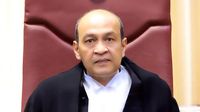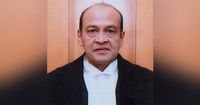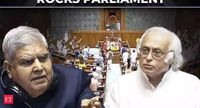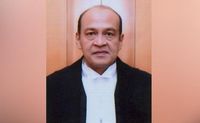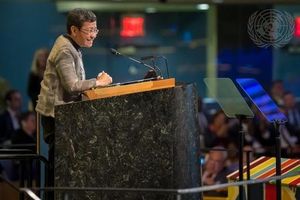The controversy surrounding Justice Yashwant Varma, a judge of the Delhi High Court, deepened this week after unaccounted cash was discovered in his residence following a fire that broke out on March 14, 2025. This incident, which has sent shockwaves through judicial circles, has led to a significant response from the Supreme Court and raised pressing questions about judicial accountability.
Justice Varma, who was not present at his home when the fire occurred, saw his family call both the fire brigade and local authorities for assistance. When the firefighters extinguished the flames, they stumbled upon a large stash of cash. This discovery prompted local police to inform their superiors, which subsequently reached the Chief Justice of India (CJI) Sanjiv Khanna.
In response to the incident, the Supreme Court Collegium convened and unanimously decided to transfer Justice Varma back to his parent court, the Allahabad High Court, where he had previously served before his current appointment in October 2021. According to court sources, some members of the five-judge collegium felt that merely transferring the judge could undermine public trust and urged for a deeper investigation. Senior advocates voiced apprehensions that such serious allegations, if inadequately addressed, could tarnish the judiciary’s reputation.
Justice Varma's judicial career began in October 2014 when he was appointed an Additional Judge of the Allahabad High Court, and he became a permanent member in February 2016. He has handled matters related to constitutional law, labor disputes, and corporate governance. His academic credentials include a Bachelor of Commerce from Hansraj College in Delhi and a law degree from Rewa University.
On March 21, 2025, amid ongoing developments, Congress MP Jairam Ramesh raised questions in the Rajya Sabha about judicial accountability, urging the Chair to respond decisively. He reminded the house of an ongoing impeachment notice against an Allahabad High Court judge, pointing to a need for systemic reform within the judiciary.
Many in the legal fraternity expressed their shock over the incident. Senior advocate Kapil Sibal remarked that the issue of corruption within the judiciary has persisted for years, highlighting the need for transparency in judicial appointments. He articulated, “The issue of corruption within the judiciary is a very serious issue. This is not something that has been articulated by senior councils and lawyers for the first time. It has been going on for years.”
Responses from the judicial branch included a statement from the Supreme Court addressing the spreading of misinformation. The statement clarified that the proposal for Varma's transfer was separate from any in-house inquiry regarding the incident. It also affirmed that Chief Justice D.K. Upadhyaya initiated an inquiry on receiving preliminary information, which would be reported to the CJI.
The structure of any further investigation will be guided by the in-house inquiry procedure established by the Supreme Court in 1999. This involves a two-stage approach, where the first requires the Chief Justice to evaluate the validity of the allegations and determine the necessity for more profound scrutiny. If the inquiry warrants further investigation, a committee would be formed to examine the issues more thoroughly.
As this situation unfolds, Justice Varma has not held court since the incident, opting to take leave amid the turmoil. The Chief Justice of the Delhi High Court, responding to senior advocates expressing their distress, acknowledged that many felt “shaken and demoralised” by the development. He assured that steps would be taken to prevent future occurrences.
As discussions within the Rajya Sabha and among legal leaders continue, the focus remains on ensuring that the integrity of the judiciary is upheld, with advocates urging stringent measures to rectify perceived failings in the judicial system. The call for reform in judicial appointments and accountability illustrates a broader concern about trust in judicial institutions across the nation.
This incident serves as a pivotal moment for the judiciary in India, shining a light on internal mechanisms and the critical need for systemic improvements. How the judiciary addresses these allegations, and the subsequent steps taken to maintain public confidence in its integrity, will likely shape its reputation in the years ahead.

